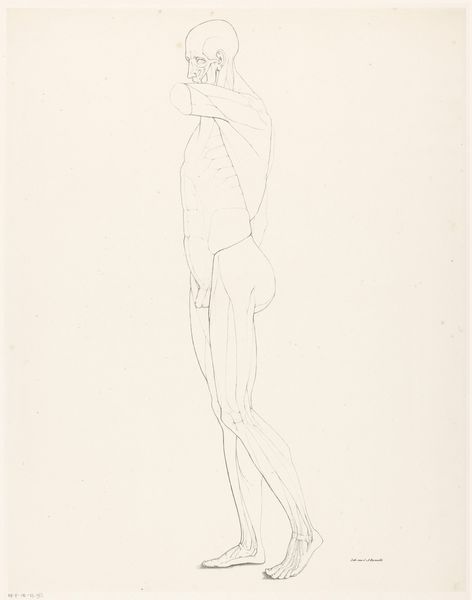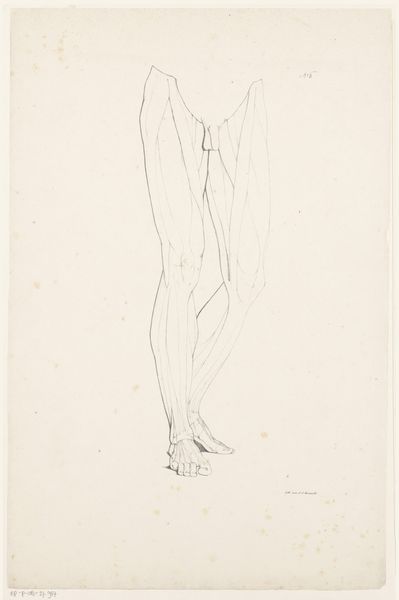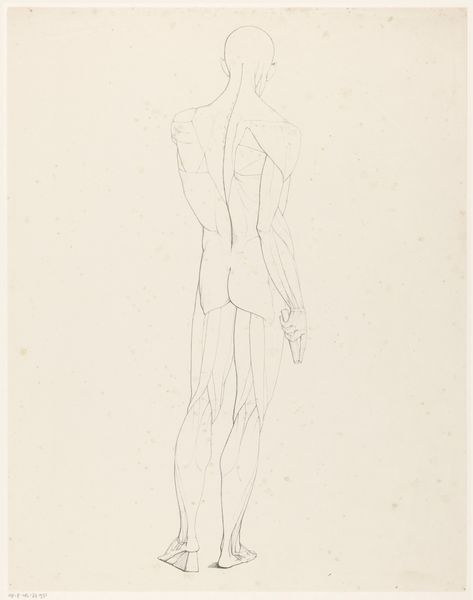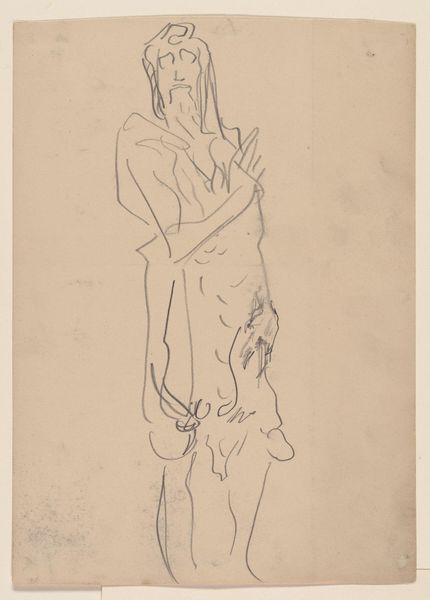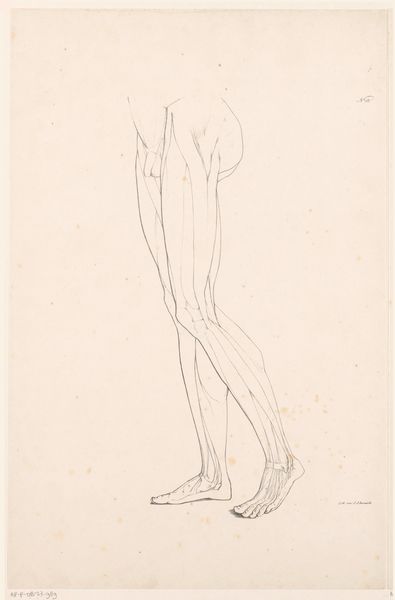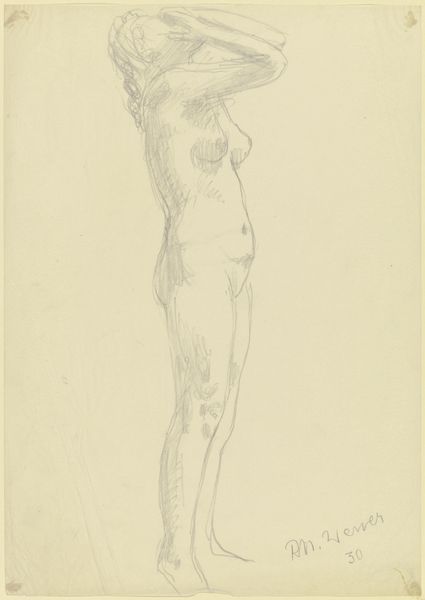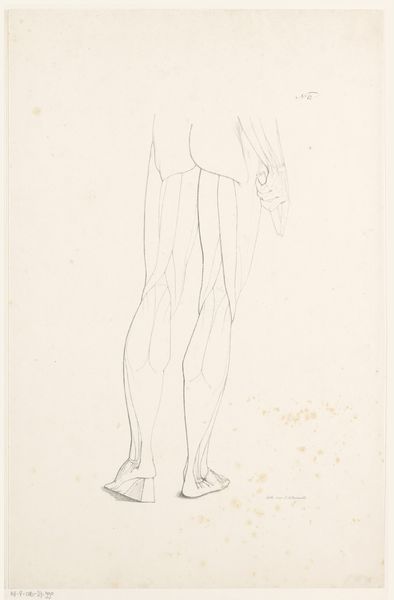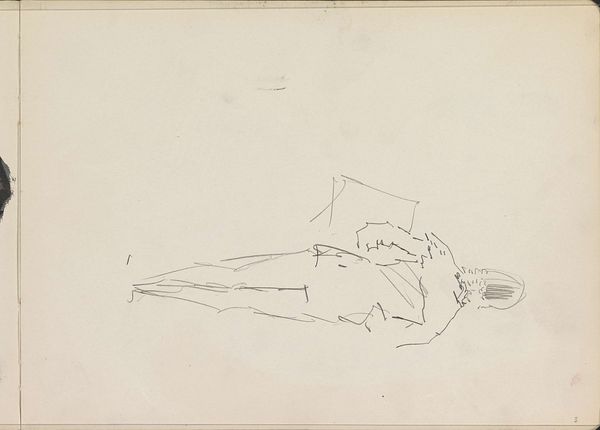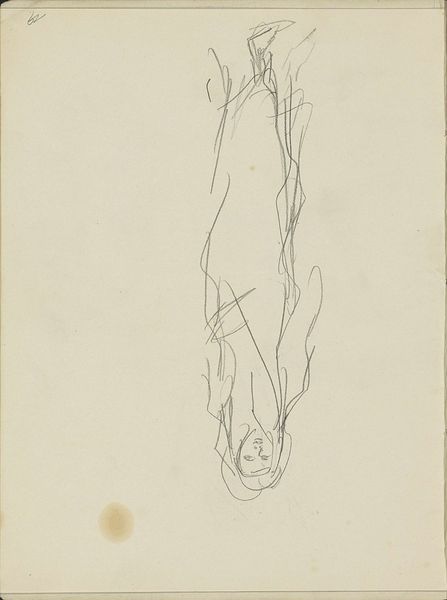
drawing, pencil
#
portrait
#
drawing
#
imaginative character sketch
#
light pencil work
#
pencil sketch
#
figuration
#
personal sketchbook
#
idea generation sketch
#
ink drawing experimentation
#
pen-ink sketch
#
pencil
#
sketchbook drawing
#
academic-art
#
sketchbook art
#
realism
#
initial sketch
Dimensions: height 410 mm, width 270 mm
Copyright: Rijks Museum: Open Domain
Jean Augustin Daiwaille made this pencil drawing of a male torso with muscles on paper in the Netherlands, sometime in the first half of the 19th century. At first glance, this seems like a purely academic exercise, but it has a fascinating social context. In the 18th and 19th centuries, the study of anatomy became increasingly important in art academies. Artists believed that a deep understanding of the human body was essential for creating realistic and expressive figures. Anatomical drawings like this one served as a crucial tool for art students to learn about the underlying structure of the human form, so it is an institutional practice rather than personal. This drawing reflects the broader cultural emphasis on reason, science, and observation that characterized the Enlightenment, and demonstrates the period’s changing attitudes towards the body. By examining the drawing alongside other historical documents, we can gain a deeper understanding of the role of art academies in shaping artistic practices.
Comments
No comments
Be the first to comment and join the conversation on the ultimate creative platform.
